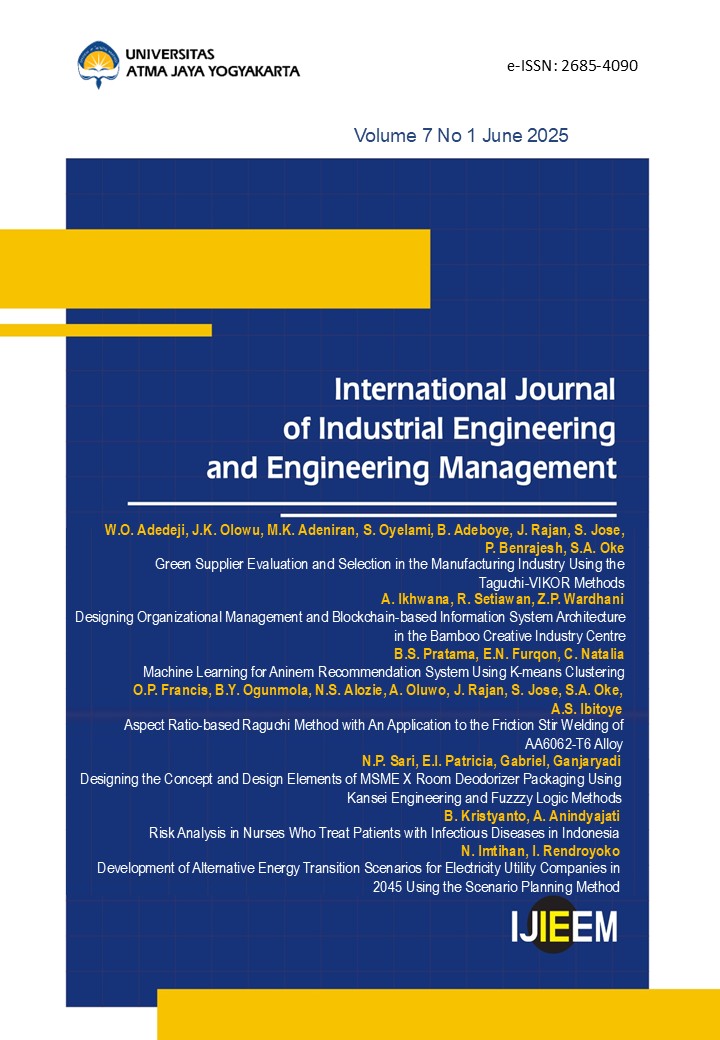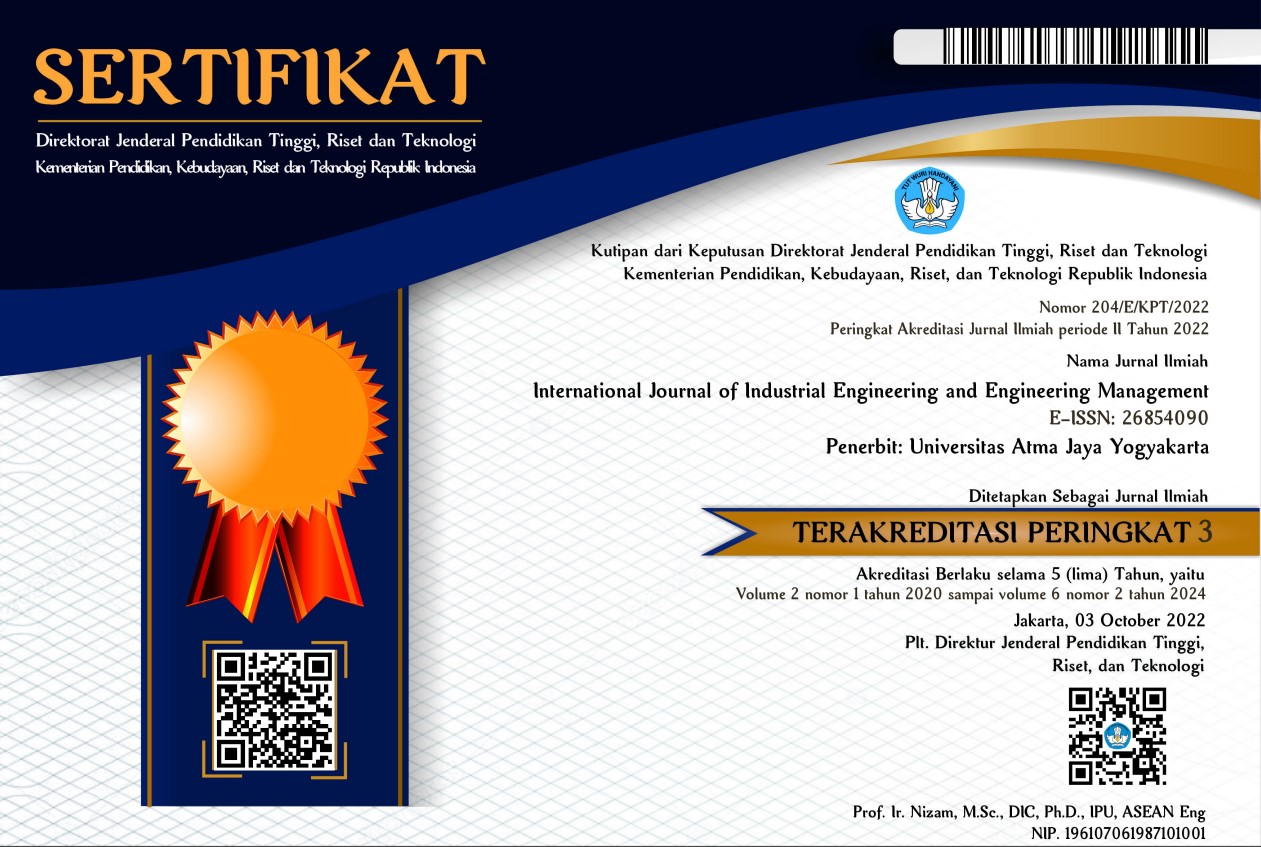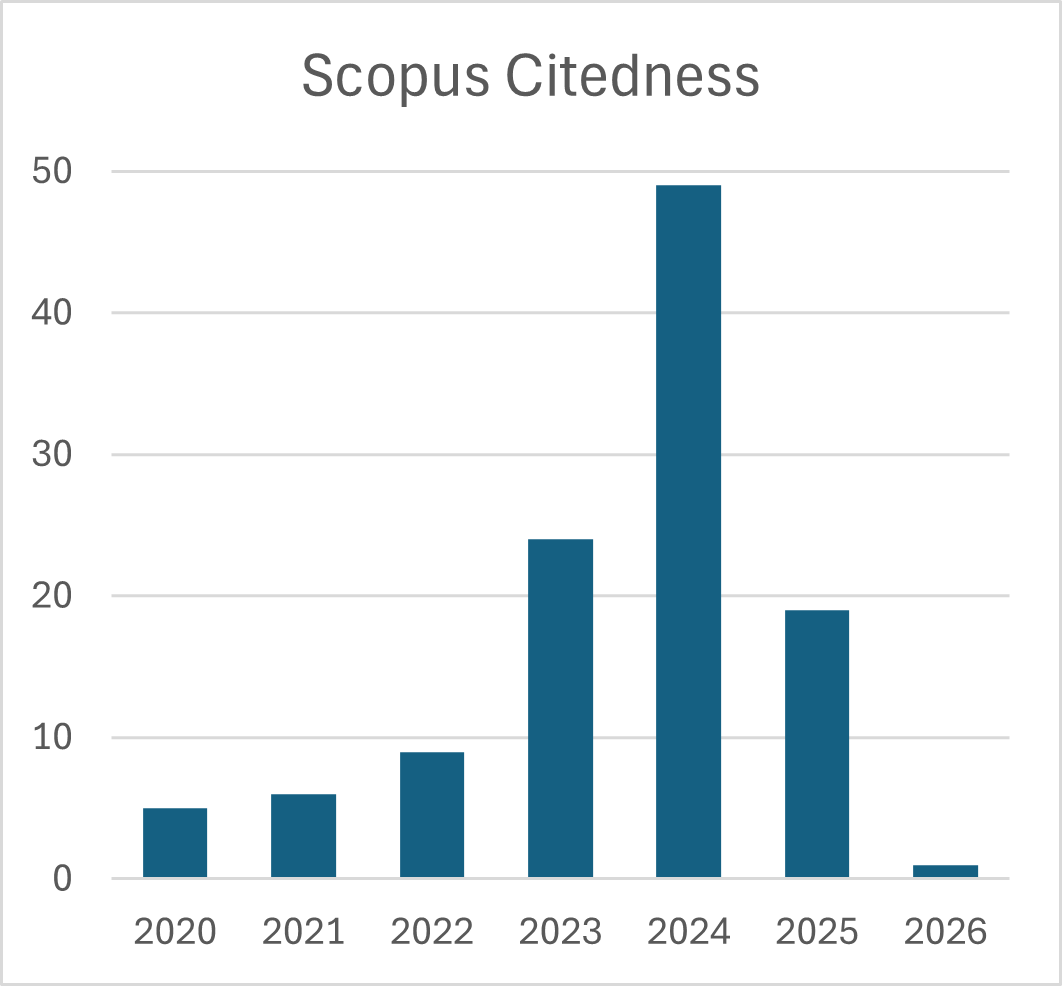Risk Analysis in Nurses Who Treat Patients with Infectious Diseases in Indonesia
DOI:
https://doi.org/10.24002/ijieem.v7i1.10071Keywords:
COVID-19, Indonesia, inward nurses, risk analysisAbstract
In this global pandemic of infectious diseases such as coronavirus-19 (COVID-19), Indonesia is one country that has a severe impact. In this situation, medical workers are arguably the most affected as they are the frontline in facing the pandemic. Their dedication and professionalism are put to a tough test; hence, they should stay healthy to provide treatment for the patients. However, in fact, many of them are infected by the coronavirus albeit the use of standard protective equipment and application of health protocols. In this study, a risk analysis on nurses working in inpatient wards for COVID-19 patients in quarantine was carried out. A Method of Human Error Analysis and Reduction Technique (HEART) was employed along with Fault Tree Analysis (FTA). The results indicated that fatigue, comorbid, and boredom were the factors associated with the highest risk of virus infection. These results suggest that management should pay attention to these factors in the work design of medical personnel, especially those who treat patients with infectious diseases such as COVID-19. In conclusion, work design must implement appropriate work shifts, as well as the implementation of strict health protocols.
References
Aida, N.R. (2020). Penyakit bawaan apa saja yang banyak diderita pasien covid-19 di Indonesia. Retrieved from https://www.kompas.com/tren/read/2020/05/02/161500565/
Amin, M., Arly, I., & Adjie, H. (2021). Tanggung jawab rumah sakit terhadap tenaga medis yang terpapar corona virus disease (Covid-19). Perspektif, 26(2), 98-109.
BBC News Indonesia. (2020). Retrieved from https://www.bbc.com/indonesia
Books, C., Coody, L.C., Kauffman, R., & Abraham, S. (2017). Night shift work and its health effects on nurses. The Health Care Manager, 36(4), 347-353.
Booker, L.A., Mills, J., Bish, M., Spong, J., Crouch, M.D., & Skinne, T.C. (2024). Nurse rostering: understanding the current shift work scheduling processes, benefits, limitations, and potential fatigue risks. BMC Nursing, 23, Article 295.
Bowo, L.P., Wanginingastuti, M, & Furusho, M. (2017). The development of marine accidents human reliability assessment approach: HEART methodology and MOP model. TransNav: International Journal on Marine Navigation and Safety of Sea Transportation, 11(2), 249-254.
Cheng, W.J., & Cheng, Y. (2017). Night shift and rotating shift in association with sleep problems, burnout and minor mental disorder in male and female employees. Occupational and Environmental Medicine, 74(7), 483-488.
Ehrlich, H., McKenney, M., & Elkbul A. (2020). Protecting our healthcare workers during the COVID-19 pandemic. The American Journal of Emergency Medicine, 38(7), 1527-1528.
Endradita, G. (2017). Healthcare and hospital consultants PT Cipta Mulya Medika. Retrieved from https://id.linkedin.com/in/galih-endradita-m-a26a8ab2
Fitero, A., Bungau, S.G., Tit, D.M., Endres, L., Khan, S.A., Bungau, A.F., Romanul, I., Vesa, C.M., Radu, A.F., Tarce, A.G., Bogdan, M.A., Nechifor, A.C., & Negrut, N. (2022). Comorbidities, associated diseases, and risk assessment in COVID-19—A systematic review. Hindawi International Journal of Clinical Practice, 2022(1), Article1571826.
Hamami, M.A.N., & Noorrizki, R.D. (2021). Fenomena burnout tenaga kesehatan di masa pandemi covid-19. Seminar Nasional Psikologi dan Ilmu Humaniora (SENAPIH), 149-159.
Hassan, A., Mohamed, F., & Maskin, M. (2020). Research reactor operator performance based on the human error assessment and reduction technique (HEART). IOP Conf. Series: Materials Science and Engineering, 785, Article 012048.
Hasibuan, C.F., Daeng, P.Y., & Hasibuan, R.R. (2020). Human reliability assessment analysis with human error assessment and reduction technique (HEART) method on sterilizer station at XYZ company. IOP Conference Series, Materials Science and Engineering, 851(1), Article 012019.
Kirwan, B.A. (1994). Guide to practical human reliability assessment. London: CRC Press.
Lombok Post. (2020). Korona NTB hampir 600 kasus, siapkah hadapi new normal? Retrieved from https://lombokpost.jawapos.com/ntb/1502774346/
Manafe, D. (2020). Pakar: Kapasitas nasional cukup memadai untuk pasien covid-19. Retrieved from https://www.beritasatu.com/news/650435/
McCarthy, R., Gino, B., D'Entremont, P., Barari, A., & Renouf, T.S. (2020). The importance of personal protective equipment design and donning and doffing technique in mitigating infectious disease spread: A technical report. Cureus, 12(12), Article e12084.
Mukaromah, V.F. (2020). Melebihi batas WHO, positivity rate covid-19 di Indonesia 12,3 persen, apa dampaknya? Retrieved from https://www.kompas.com/tren/read/2020/07/25/112700465/
Ndetei, D.M., Nyamai P., & Mutiso V. (2023). Boredom–understanding the emotion and its impact on our lives: An African perspective. Frontier in Sociology, 8, Article 1213190.
Nova, N., & Adisasmito, W.B.B. (2021). Gambaran Umum Faktor Resiko Covid-19 Pada tenaga kesehatan Rumah Sakit Asia. Jurnal Health Sains, 2(8), 1032-1039.
Nurmianto. (2004). Ergonomi: Konsep dasar dan aplikasinya. Surabaya: Guna Widya.
OSHA 3990-03. (2020). Retrieved from https://www.osha.gov/sites/default/files/publications/OSHA3990.pdf
Pesulima, T.L., & Hetharie, Y. (2020. Perlindungan hukum terhadap keselamatan kerja bagi tenaga kesehatan akibat pandemi covid-19. SASI, 26(2), 280-285.
Rezkisari, I. (2020). APD yang terus menerus kurang. Retrieved from https://news.republika.co.id/berita/q83350328/
Rutala, W.A., Boyce, J.M., & Weber, D.J. (2023). Disinfection, sterilization and antisepsis: An overview. American Journal of Infection Control, 51(11S), A3-A12.
Saptorini, K.K., Fani, T., Setijaningsih, R.A. (2022). Praktik penerapan protokol kesehatan pada praktisi rekam medis di masa pandemi covid-19. HIGEIA (Journal of Public Health and Research and Development), 5(4), 614-624.
Sembiring, K., Rahman, S., & Tasalim, R. (2022). Analisis faktor penyebab stres tenaga kesehatan di masa pandemi covid-19: Narative review. Caring Nursing Jurnal, 6(1), 18-25.
Setyarini, E.W., & Dwianggimawati. M.S. (2021). Analisis faktor resiko penularan pada petugas kesehatan di era pandemi covid-19 di Kabupaten Jombang. Jurnal Inovasi Penelitian, 2(2), 743-750.
Suma'mur. (1984). Higiene perusahaan dan kesehatan kerja. Jakarta: PT Gunung Agung.
Tarwaka. (2016). Ergonomi industri: Dasar-dasar pengetahuan ergonomi dan aplikasi di tempat Kerja. Solo: Harapan Press.
van Hooft, E.A.J., & van Hooff, M.L.M. (2018). The state of boredom: Frustrating or depressing? Motivation and Emotion, 42(6), 931-946.
Valderas, J.M., Starfield, B., Sibbald, B., Salisbury, C., & Roland, M. (2009). Defining comorbidity: implications for understanding health and health services. The Annals of Family Medicine, 7(4), 357-363.
Williams, J.C. (1986). HEART – A Proposed Method for Assessing and reducing human error. In 9th advance in reliability technology symposium (ARTS), IEEE Fourth Conference on Human Factors and Power Plants, 436-450.
Yulianingtyas, R., Wigati, P.A., & Suparwati, A. (2016). Analisis pelaksanaan manajemen resiko di Rumah Sakit Islam Sultan Agung Semarang. Jurnal Kesehatan Masyarakat, 4(4), 121-128.
Downloads
Published
How to Cite
Issue
Section
License
Copyright (c) 2025 Bernadus Kristyanto, Adhi Anindyajati

This work is licensed under a Creative Commons Attribution 4.0 International License.








